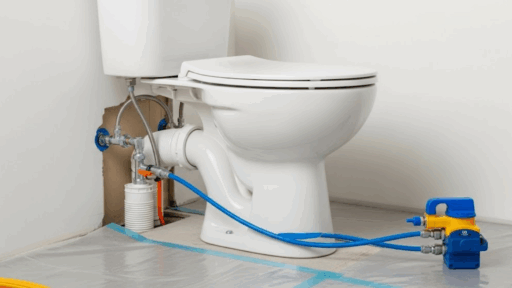Starting a small renovation can feel exciting, especially when you picture the final result. The tricky part is knowing how much material you need. Running short can bring your project to a halt while buying too much leaves you with wasted money and clutter you don’t need.
The good news is that estimating materials is easier than most homeowners think. Simple calculations can help you stay on budget and avoid unnecessary stress. Planning also means fewer trips to the store, which keeps the work moving smoothly.
But how do you determine the right amount without second-guessing yourself at every step? Read on to find out!
Create a Clear Project Plan
Before buying any building materials, outline the scope of your renovation. A clear plan allows you to list and prioritize the tasks based on importance. For example, painting may require fewer resources than replacing tiles or adding new fixtures. This planning step helps you stay focused and reduces unnecessary purchases.
A detailed plan also simplifies the estimating process. It allows you to consider labor costs, project documents, and equipment costs together instead of making decisions in separate stages. Understanding these details upfront helps you create realistic cost estimates for the entire project.
Make sure the plan outlines a list of reputable suppliers known for quality and dependable service. This ensures you’ll have access to house building supplies that match your budget and the specific needs of your renovation. Having trusted sources lined up beforehand will help prevent last-minute changes and keep your project moving without unnecessary delays.
Measure the Space Accurately
Accurate measurements are essential for material estimation. Start with the square footage of each area you plan to renovate. For walls, multiply the height by the width to find the total square feet. If a wall is 10 feet high and 12 feet wide, for example, you would need to cover 120 square feet. When working on floors, measure the length and width of the space, then compare it to the coverage details on product packaging.
Measuring carefully reduces errors and prevents purchasing too little or too much. It’s also helpful to double-check your measurements before finalizing any purchases. Once you have accurate numbers, you’ll find the rest of the estimating process moves more smoothly.
Use Online Calculators and Tools
Online calculators can simplify estimating construction costs and materials. Many websites provide free tools that allow you to determine the price by entering square footage and material type. These calculators give quick results that can help guide your purchasing decisions.
While these tools are convenient, always compare their results with your own measurements. Different construction materials have varying coverage rates, so confirming details ensures accuracy. Using these resources saves time and reduces stress during project planning.
Account for Waste and Extras
Even with accurate estimates, unexpected waste can occur. Cutting tiles, trimming boards, or adjusting layouts often results in leftover pieces. Adding a small percentage to your material estimate allows room for these changes. For flooring, an extra 5-10% is common, while more intricate patterns may require more buffer.
This cushion helps you avoid sudden shortages that disrupt progress. It also ensures you have enough materials if you need to make adjustments during the home renovation project without increasing overall project costs.
Compare Materials and Packaging
Construction materials aren’t always packaged the same way, which can make estimating a bit confusing. Some products are listed in square foot coverage, while others are measured in board foot or sold in pre-set packages. Knowing these differences upfront makes it easier to estimate how many units your building project will require.
Packaging differences also affect your budget. One tile brand might cover more square feet per box than another, even if the price seems close at first glance. Checking the unit price and comparing coverage helps you make smarter choices, ensuring the materials you choose fit your project’s needs and your spending plan.
Review and Adjust Before Buying
Before making any purchases, take a moment to review your plan. Go through your calculations carefully and confirm they match the actual needs of the renovation. Doing so will help you spot gaps early, whether it’s missing materials or overlooked indirect costs such as delivery fees.
Think about storage as well. Ordering every material at once can easily clutter your work area and slow progress. Staggering purchases often makes more sense, keeping the space organized and the project moving without last-minute scrambling. A quick review at this stage keeps everything on track and avoids unnecessary stress once work begins.
Consult Experts When in Doubt

When you’re unsure about material needs or cost estimation, talking to a professional can save time and prevent mistakes. An experienced contractor can review your measurements and provide advice based on experience. Their guidance is especially helpful if your remodeling project involves unique products, such as custom roofing materials or high-performance flooring.
Even if you plan to handle most of the work, a quick consultation can help you understand project costs. Experts can identify potential issues early and help you avoid costly delays during the renovation.
Conclusion
Estimating building materials for small renovations requires preparation and careful planning, but it doesn’t have to feel overwhelming. With the above tips, you can approach the process more confidently and avoid the stress that comes with guesswork.
Remember, each renovation is unique, and reviewing your calculations before buying can save money and prevent unnecessary delays. The key is to take it step by step, check your work as you go, and adjust where needed.








